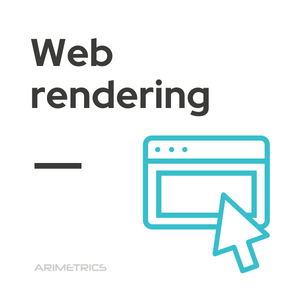 Definition:
Definition:
Web rendering, or web page rendering, is the process of displaying web content in a web browser such as Google Chrome or Firefox. It involves downloading web pages from web servers, parsing HTML and CSS files to create the structure of the web page, applying style and formatting with CSS , loading external resources such as images and videos, and executing client-side actions such as JavaScript code.
What is web rendering for?
Web rendering is a crucial part of web browsing, as it allows users to view web content as it was conceived by web developers. Although web browsers are constantly improving in speed and performance, there are still many factors that can affect the quality and accuracy of web page rendering, such as network connectivity issues, standards and web browser compatibility issues, web server configurations, and various other factors.
How web rendering works
The steps that a browser follows for a web rendering or rendering are as follows:
- The web browser first requests the content of the web page from the web server that hosts it. This is known as an HTTP request.
- Once the content of the web page is received, the browser will start analyzing the content, which includes HTML and CSS files.
- Once the structure of the web page and the style information have been analyzed, the browser will start loading the external resources to which the content of the web page refers, such as images and videos.
- Finally, web browsers will execute any client-side actions defined on web pages, such as JavaScript code or web applications.
Why web rendering is important for SEO
Web rendering is an essential part of web browsing, and plays an important role in SEO strategy . Search engines use web page rendering to analyze and index them in their database. Without proper web rendering, search engines may not be able to correctly recognize the content of web pages and therefore may not be able to accurately determine the relevance of web content to search queries.
